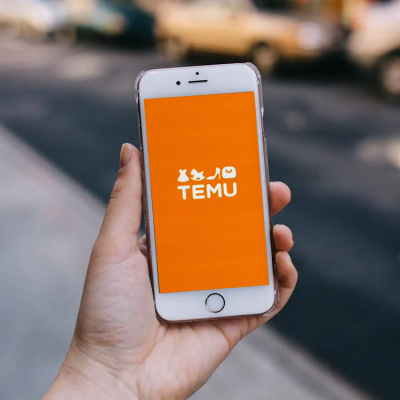Temu: Fresh Competition
Temu’s entry into the market has shaken up the competition for ad space among local brands, thanks to, in part, its substantial ad spend, exceeding $5 billion a year. This investment has created a fiercely competitive landscape in the online shopping sphere.
For retail advertisers, aggressively bidding on Temu or Shein is crucial; neglecting this opportunity means missing out on a significant share of the market. Currently maintaining an average impression share of about 40%, Temu ensures that a significant portion of its target audience is exposed to its ads. It’s no surprise that whenever you search for a product, Temu seems to dominate search results.
The surge in interest in Temu, as revealed by Google Trends data, has seen it outpace both Shein and Superbalist in monthly search volume. Interestingly, Temu appears to prioritize promoting its own brand terms over aggressively bidding on competitor terms, as evidenced by the absence of Temu ads in direct searches for Superbalist or Shein.

Where are local brands falling short?
In South Africa, there’s been a notable emphasis on performance marketing in recent years, often at the expense of brand awareness efforts. Many brands underestimate the importance of building brand awareness from the outset, prioritizing immediate conversions and sales instead. Allocating only a small fraction of the budget to awareness, or ignoring it in its entirety proves challenging. A more effective strategy involves dedicating a substantial percentage of resources to awareness, with the remaining for conversions. As your brand’s audience expands, adjustments can be made to rebalance the allocation, gradually shifting focus towards conversions while maintaining brand visibility.
It’s a common oversight for brands to neglect their awareness efforts until major holidays or retail seasons, overlooking the fact that they’re competing for consumer attention alongside numerous other brands at that precise moment. Prioritizing consistent investment in brand awareness and consideration phases ensures you remain top of mind and secure a share of the market.
Here’s how local brands can remain competitive.
- Embrace local culture: With our robust South African culture at our disposal, local brands should craft marketing strategies that forge deeper connections with their audience.
- Smart bidding: Amidst fierce competition, bidding on competitor terms within Google Ads is essential. While this may result in higher costs per click (CPC), failing to bid on your own brand terms while competitors do could lead to missed exposure and lost conversions.
- An Omni-channel approach: Enhance brand visibility and reach by building a robust omni-channel presence. Integrating online platforms, physical stores, and mobile apps ensures consistent shopping experiences across diverse channels, captivating and retaining customers.
- Build loyalty and provide value: Differentiate your brand from international competitors by offering competitive pricing and compelling promotions. Implementing discounts, loyalty programs, and exclusive deals encourages repeat purchases and fosters brand loyalty.
- Prioritize customer centricity: Brands that prioritize customer satisfaction and focus on delivering exceptional experiences gain a competitive edge. South African consumers highly value superior customer service and are willing to pay a premium for it.
- Personalization is key: Enhance customer experiences by incorporating personalized elements into your marketing campaigns. Utilize machine learning (ML), AI, dynamic creative optimization (DCO), and data driven creative (DDC) to tailor offerings to individual preferences. With the deprecation of third-party cookies, leveraging creative and ML becomes even more critical in identifying and targeting the right consumers for your products.
Amazon has entered the chat: How does this affect the dynamic between Temu/ Shein and local brands?
Amazon’s official launch in the South African market adds another layer of complexity to the local e-commerce market. While Amazon promises access to a wider array of products not currently available locally, the response from consumers remains uncertain. Factors such as pricing dynamics and shipping costs will play a crucial role in shaping consumer preferences. While Temu and Shein have established themselves as affordable options, Amazon may introduce competitive deals and improved pricing, potentially altering the market landscape. With the drawback of extended delivery times for Temu and Shein orders, Amazon’s arrival could disrupt existing dynamics. Recent reports suggesting Takealot’s contemplation of selling Superbalist highlights the market’s evolving nature and the pressure on local players.
As the competition intensifies, robust marketing strategies and adaptability will be key for local brands to thrive amidst the changing tides. The evolving landscape underscores the need for continuous monitoring and dynamic strategic responses to remain relevant in the face of shifting consumer preferences and market dynamics.



